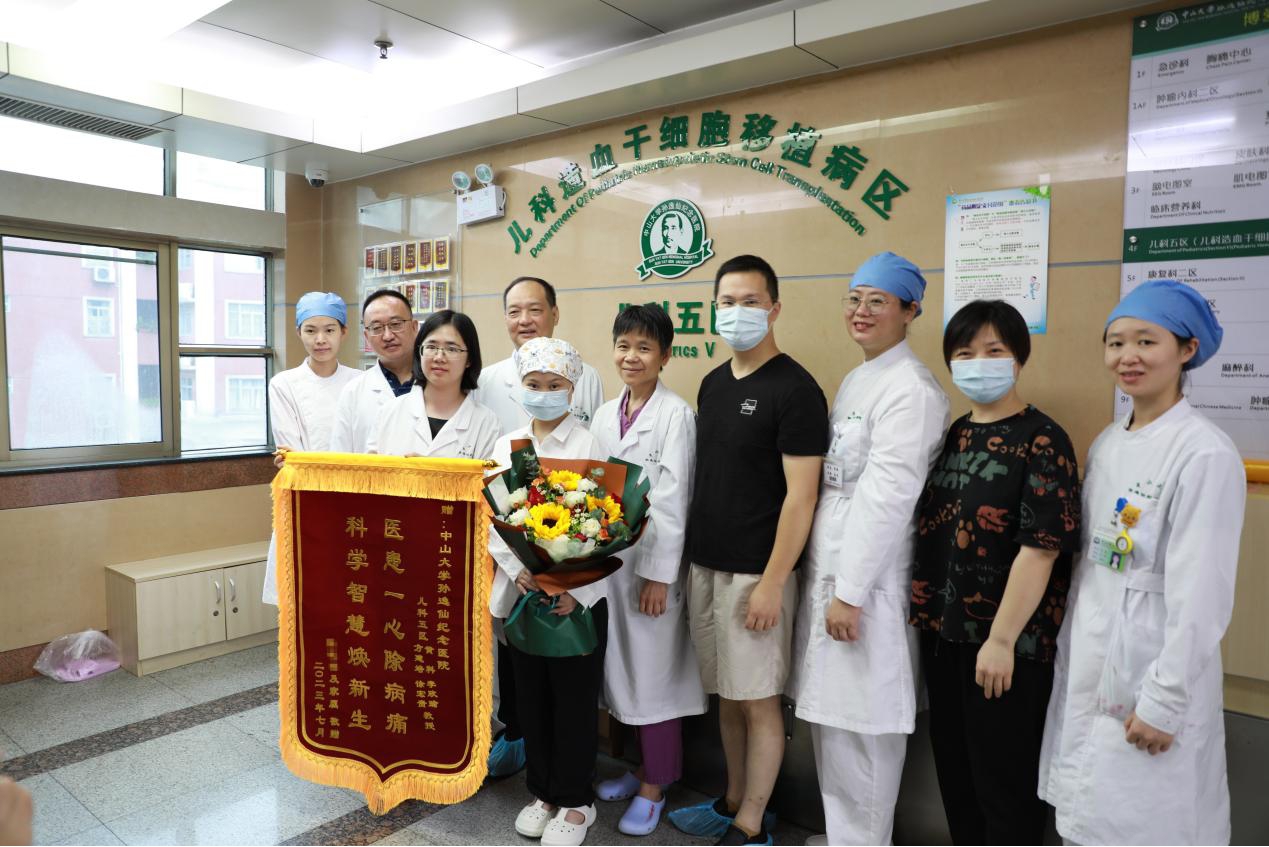Recently, Xiaolin (assumed name), a child with β-thalassemia major who had to receive monthly blood transfusions and daily medication, has been discharged from Sun Yat-sen Memorial Hospital and is expected to stop taking medicine.

(Photo provided to GDToday)
Fang Jianpei, a professor of the Department of Hematology/Oncology at the Children’s Medical Center of the hospital, said that Xiaolin is the first patient in Guangdong to use RM001 cell gene editing to treat β-thalassemia major.
Autologous hematopoietic stem cell transplantation based on gene editing has become a new hope for curing β-thalassemia.
Fang said that thalassemia major is a genetic disease in which globin gene mutations lead to insufficient haemoglobin synthesis, and it is highly prevalent in Guangdong, Guangxi, Hainan, Hunan, Sichuan, Guizhou, and Yunnan provinces. Anemia will gradually appear in children after birth and gradually worsen, requiring lifelong blood transfusions. Due to repeated blood transfusions once or twice a month, the iron element will be deposited in organs in the children’s bodies, resulting in complications.
Last November, China’s National Medical Products Administration approved the first stage clinical research of RM001 cell infusion. Xiaolin, who met all the conditions for this therapy, saw new hope.
This June, she began to prepare for gene therapy, and the edited autologous stem cells were successfully reinfused.
28 days later, having passed the critical period, Xiaolin was discharged from the hospital to continue her rehabilitation and follow-up visits, and is expected to be off medication shortly.
Author | Eliana Chen (intern), Hannah
Editor | Olivia, Steven, Jasmine, James
















